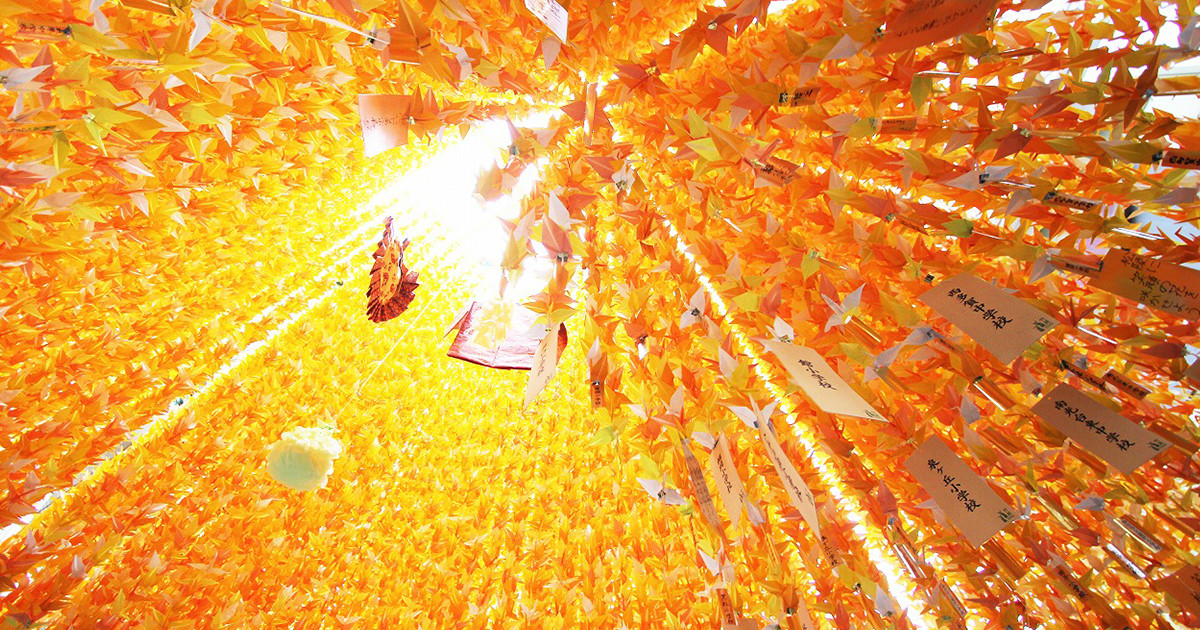The Sendai
Tanabata Star Festival
In the summer, regions across Japan host many religious festivals called matsuri.

The yellow area is Tohoku, in northeastern Japan (numbers 2, 3, 4, 5, 6 and 7), where summer matsuri are held in July and August.
The six largest festivals in Tohoku are:
Aomori's Nebuta Festival (2),
Akita's Kanto Festival (5),
Iwate's Sansa Odori Festival (3),
Yamagata's Hanagasa Festival (6),
Miyagi's Tanabata Festival (4),
and Fukushima's Waraji Festival (7).
In 2017, I headed to Sendai to attend the final day (August 8) of one of these major events—Miyagi's Tanabata Festival (4).
Miyagi Prefecture is famous for being the home of Date Masamune, the lord of the Sendai Domain in Japan's feudal days. From that time forward, one of Tohoku's biggest festivals has been the Sendai Tanabata Star Festival.
Date was a small child, never growing taller than 160 cm, who lost sight in one eye due to a bout of smallpox when he was quite young. However, he dedicated himself to developing relationships inside and outside Japan, interacting with England and other countries in the 16th century. Sendai became known for many historical firsts due to the delegations that it sent abroad.
The Tanabata Festival supported by Date has continued to this day, overcoming many challenging crises, such as earthquakes and bombardment during war.
Previously, I had only been able to see it on television, but now I had arrived at the actual site.
The festival information counter inside Sendai Station offers maps in Korean.
On that particular day, a typhoon was lingering in Sendai. Luckily, however, most of the festival decorations are hung in a covered shopping arcade, so rain does not dampen the brilliant display.
I headed to the arcade a short distance from the station. I saw the first decorations swaying in the wind drifting in from the arcade entrance.
It seemed that this year's design involved shops putting up ornaments in front of their businesses while displaying their creative artwork for the year.
I stopped in front of the most strikingly attractive decoration among the numerous ones present.

Standing fixed in front of the display labeled "2017 Tanabata Gold Medal Recipient,"
I was surrounded by crowds snapping pictures. Curious.
Why was this Tanabata Festival so popular when they did not have the kinetic energy, parades, and processions found in other regions?
I found the answer in the artistry of this gold medal winner.
In the middle of a cluster of five decorations was one with Date Masamune, the one-eyed samurai who promoted this festival.
More than any of the other works, this particular one drew the most attention and had been handmade using only traditional Japanese washi paper.
Where the arcade came to a T intersection, more Tanabata decorations were fluttering in the breeze.
To my list of favorites, I added the red decoration put up by an airline company.
I could tell that it was supposed to be a Japanese airplane just from the color pattern.
At first, I had thought that Tanabata decorations were only made by people in the local area, but I guess companies make them as well.
As I walked some more, I saw quite a few decorations put up by each shop.
The thousands, or even tens of thousands, of decorations all had slight variations.
I started to wonder who made these designs every year and how they made them.

My eyes caught a panda decoration, no doubt reflecting the happy mood that had run through society when news broke that a baby panda had been born at Ueno Zoo this year.

Popular characters were also portrayed in the decorations.








